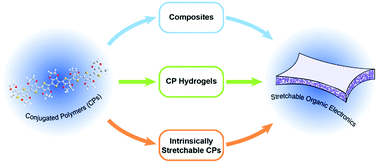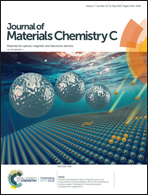Conjugated polymers and composites for stretchable organic electronics
Abstract
Stretchable electronics has become a focus of interest amongst the academic research and industrial communities due to its potential to enable a wide variety of emerging applications, including wearable displays, energy-storage, skin-mounted sensors and biosensors, human-machine interfaces and soft robotics. To realise these applications, the devices are required to adhere and conform to soft curvilinear surfaces, while be able to bend, compress, stretch and even self-heal, much like the human skin. Organic materials, particularly, conjugated polymers possess a unique molecular structure, which enables their optical, electrical, and electrochemical properties. In fact, one of the main features that make these materials highly suitable for stretchable electronics is the chemically-tunable mechanical properties that allow structural deformation without significantly affecting the electronic function. In this review, we discuss ours and others’ recent attempts in designing and engineering conjugated polymers and their composites to incorporate new mechanical and physical characteristics that are not intrinsic to these organic materials, such as stretchability and self-healing abilities. We discuss such approaches from a molecular design perspective. In particular, the focus is on the molecular parameters, such as material choices, synthetic approaches and molecular interactions that play a crucial role in enabling such new characteristics. Furthermore, we highlight recent progress in their applications and discuss the future prospects of stretchable organic electronics.

- This article is part of the themed collections: Journal of Materials Chemistry C Advisory Board Collection and Recent Review Articles


 Please wait while we load your content...
Please wait while we load your content...